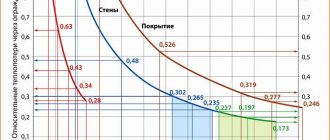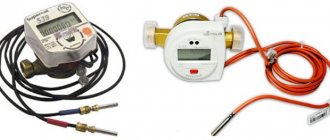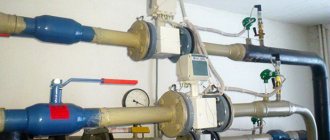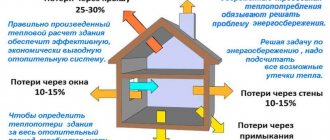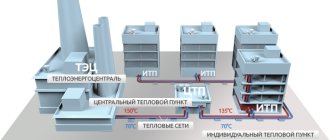Heating law
Regulation of the heating sector of multi-storey and private buildings is carried out in accordance with Federal Law No. 190. The legal act stipulates the powers of state and local government institutions for heating multi-apartment and other buildings. The rules for hot water supply using open heat supply systems (hot water supply) are established by Federal Law No. 416, dated December 7, 2011, as amended in 2021. Government Decree No. 354 explains the provision of heating and other utility services to owners and users of multi-storey and private houses.
Legislative documents
Order of the Russian Government dated 05/06/11 number 354 clarifies the regulations for calculating the amount of payment for heating. However, over the years it has undergone some changes. At the direction of the country's Constitutional Court, amendments were made to the legislation.
Now owners and users of apartments where autonomous heating is installed are not required to pay for central heating services. The order is enshrined in Government Decree No. 1708, which indicates a change in the rules for the provision of business services for artificial heating of premises to compensate for heat loss. The decree is valid from January 1 of this year, 2020.
In the old rules of PP No. 354, the second paragraph in paragraph 40 is considered invalid. He discussed the debate between the owners, who dismantled their central heating and installed autonomous heating systems, and utility service providers. Before the court decision, all rights were on the side of the service provider. However, the Constitutional Court recognized this provision as incorrect.
The consumption of the thermal asset is divided into general and apartment (individual) consumption. The first paragraph of constitutional order number 46-P establishes the rules for calculating payments for utility services - heating of buildings. He explains that a multi-storey residential building looks like a voluminous building structure, which includes not only apartments, but also common areas that require heating.
Watch the video: “Affordable housing and communal services: calculating heating fees”
However, if the owner of the premises refuses the centralized heating service, the first is obliged to pay the costs of the heating network to maintain the optimal temperature in the common building blocks. The Constitutional Court of the state agreed with this statement. Section No. VI, 40 paragraph 2 of Order 354 indicated joint payment for individual and general house services, without breaking it down. Based on this, the judges declared the aspect unconstitutional.
Today, if a consumer has removed his apartment central heating system, he has the right not to pay for it, but the consumer is not relieved of the obligation to make payments for heating common areas of the house. But the dismantling of batteries must occur in accordance with the law.
The second statement of the judicial body of constitutional control stipulates the process of reorganizing the design of indoor heating. The authority believes that the transition to an autonomous heat source requires legal compliance with the regulatory conditions for the reconstruction of the system.
Similar circumstances are stated:
- Article 4 of the Housing Code;
- Town Planning Code - Federal Law No. 190;
- Russian Government Decree No. 787, which stipulates unauthorized access to heating networks.
The listed legal acts indicate the preparation of technical documentation for the transition to an autonomous system, with subsequent coordination with the institution of local self-government. Based on the above, the owner of a multi-apartment or private building must comply with all the rules for transferring to individual heating.
Payment adjustment
The general approach to calculating the amount of payments for provided household needs is determined by Article 157 of the Housing Code. However, according to the decision of the Constitutional Court, it turned out that the rule is unfair in relation to residents of high-rise and private housing constructions, which are equipped with common and apartment metering devices.
Therefore, the regulations for calculating payments for heat from 2021 have been clarified at the legislative level. The calculation of payment for heating a multi-storey building is also carried out according to the rules of Section IV of Appendix 2 of Resolution 354. But the calculation uses the new version of the law, published in January of this year 2021.
Benefits for labor veterans and disabled people
Benefits for payment of thermal energy are provided at 2 levels:
- On the federal:
- heroes of the USSR and social labor;
- veterans and disabled people of the Great Patriotic War;
- persons affected by the Chernobyl accident;
- disabled people of all three groups;
- citizens raising a disabled child.
| Centralized heating system | Possibility of charging for heating |
| Collective (common house) metering device | In its absence, a penalty coefficient increases the payment by 50% |
| Individual metering devices | Complicating the formula by introducing the difference between heating apartments and general house needs |
| Accrual during the heating season | Higher amounts during the heating season and their absence in the summer |
| Accrual during the calendar year | Even distribution of expenses throughout the year |
- At the regional level: low-income and large families;
- pensioners;
- labor veterans;
- Home front workers during the Second World War and residents of besieged Leningrad;
- public sector workers.
The only way to get the modernization of housing and communal services in the country off the ground is to create a system of incentives for owners to optimize their costs for consumed utilities. To do this, it is necessary that there is a direct and strict correlation between the amount of payment and the volume of consumption. And this can only be achieved through the mass introduction of individual metering devices (in our case, heat).
This is important to know: Decree 13 14: gasification of residential buildings
If you find an error, please select a piece of text and press Ctrl+Enter.
How is the cost of an apartment building calculated?
Calculation methods are formulas that take into account the main parameters:
- apartment area;
- heat consumption standard;
- approved tariff;
- duration of the heating season;
- meter readings, etc.
To clearly demonstrate the differences in formulas and methods, we allow the following parameter values:
- area – 62 sq.m;
- standard – 0.02 Gkl/sq.m;
- tariff – 1600 rub./Gkl;
- heating season coefficient – 0.583 (7 out of 12);
- readings of a common house meter - 75 Gkl;
- total area of the house – 6000 sq.m;
- the volume of thermal energy consumed in the past year – 750 Gcl;
- readings from an individual device in the apartment - 1.2 Gcl;
- the sum of readings of all meters in apartments is 53 Gkl;
- average monthly readings of apartment meters – 0.7 Gkl;
- the sum of average monthly readings of individual appliances around the house is 40 Gcl;
- The average monthly readings of a common house appliance are 44 Gcl.
By area
If an apartment building is not equipped with metering devices (neither collective nor individual), then in this case the fee is calculated by multiplying the area of the apartment, the consumption rate and the approved tariff. When paying evenly throughout the year, another multiplier is added - the ratio of the number of months of the heating season to the number of months in the year.
Then in the first case (when charging a fee only during the actual provision of the service), the owner will be presented with 62 * 0.02 * 1600 = 1984 rubles for payment. per month. If paid throughout the year, the amount per month will be lower and will be 62 * 0.02 * 1600 * 0.583 = 1156.67 rubles. However, for the year in both cases, approximately the same amount will be collected from the consumer.
According to the meter in the apartment
When installing communal and apartment meters in a house, the calculation formula consists of two steps:
- calculating the difference between the readings of a collective device and the sum from adding the readings of apartment devices;
- charging of fees taking into account the readings of an individual device, a share of general household expenses and the approved tariff.
So, if residents pay for heating services directly after the fact, i.e. during the heating season, they will be charged an amount in the amount of ((75-53)*62/6000+1.2)*1600=2118.40 rubles per month of payment. When paying for the entire calendar year, not the actual readings of the instruments are substituted into the formula, but their average monthly values. In this case, the homeowner will be issued an invoice every month with the same amount ((44-40)*62/6000+0.7)*1600=1186.13 rubles.
According to the common house meter
If a common building meter is installed in an apartment building, but there are no individual meters in the apartments, then the calculation formula changes slightly. It is the product of the device readings, the approved tariff and the quotient of the apartment area to the total area of the house. In this case, the owner will be required to pay 75*1600*(62/6000)=1240 rubles. in the current month.
If the residents of the house pay for heating throughout the entire calendar year, then the formula undergoes changes and becomes equal to the product of the area of the apartment, the approved tariff and the quotient of dividing the annual volume of heat by the number of months in the year and the total area of the house. In such a situation, the user will receive a monthly receipt for payment of 62*1600*(750/12/6000)=1033.33 rubles.
If you have a collective meter and have chosen the payment option throughout the year, in the first quarter of the new year an adjustment will take place taking into account the actual energy consumed for the previous period. This means that excess amounts paid will be charged or written off. To calculate them, the following formula is used:
volume of heat actually consumed per year*approved tariff*(area of the apartment/area of the house) – amount paid by the consumer for the year
If the value is positive, the amount will be added to the next payment; if it is negative, it will be deducted from the next payment amount.
What is the procedure for calculating fees in MKD according to standard 354 of the Resolution?
If there are several payment systems for the same utility service, and in addition, the provision of this benefit has the property of non-excludability (that is, it is impossible to exclude individual users from consuming this service), then it is necessary to invent ways to properly account for its expenditure in order to no one was forced to overpay for the amount of service (in our case, heat) that was not actually consumed.
In accordance with the amendments to the Rules for calculating heat consumption (No. 354), depending on the various combinations of the presence of heat consumption meters, there are 4 different options for how to calculate the payment for consumed heat for each of the responsible tenants of the apartment building, which are described by four formulas.
The resulting indicator of the formula is the amount of monthly deductions for using the service . A detailed examination of these formulas will allow you to understand how to check the correctness of the fee calculation.
If neither communal nor individual metering devices are installed
Here, payment for consumed heat in an apartment is calculated as a result of a combination of three parameters:
- the current standard (approved by the state administration of the region), which determines exactly how much energy (Gcal) is required to heat your home (1 m2) per month;
- the current tariff for the cost of real and conditional gigacalories;
- total area of the apartment (balconies and other unheated spaces are not taken into account here).
The formula for monthly consumption is as follows:
| Pi=Si x N x T |
- Si is the total area of i residential or non-residential premises.
- N is the standard consumption of heating utility services per month.
- T – tariff for thermal energy approved by the regional administration.
The law provides for the possibility of charging for heating:
- as during only the heating season itself;
- and throughout the year (is it legal to pay for heating in the summer?).
The decision on how the heat supply bill will be calculated is made by the regional authorities (depending on the fullness of the budget for the repair and operation of heating networks). But if a decision is made to charge according to the standard throughout the year evenly (that is, in the summer, when heating is not in demand, too), then correction factors are applied in the calculation formula.
Moreover, if payment is made according to standard indicators, and the house is equipped with a common heat meter, then with uniform accrual, the same amount will be charged to you both in winter and in the summer months.
Thus, a situation may arise when the number of gigacalories consumed according to the standard exceeds their actually used value. In this case, an adjustment payment must be made in favor of each responsible tenant based on the results of actual heat consumption.
The adjustment formula for each apartment is as follows:
- Si - total area i of residential or non-residential premises;
- Stotal - the total area of the entire residential building;
- n is the number of months for which the recalculation is made;
- Pi is the accrued amount for i residential or non-residential premises for n months;
- Pcount. – the amount of heat consumption according to the common house meter for n months of consumption.
This is important to know: VAT benefits for housing and communal services management companies
If payment does not occur evenly throughout the year, but only for the billing period (that is, for each month individually), then Formula 1 is used, where the standard indicators correspond to a given month (the most common calculation option).
ODPU is present, but IPU is not
An important amendment to this formula is that not a single apartment in the building is equipped with an individual heat meter:
| Pi = V d x S i / S rev x T |
- V d - the volume of consumed heat for the billing period, in accordance with the readings of a common house heat meter.
- S i is the area of the i-th residential (or non-residential) premises.
- S o b - the total area of all residential and non-residential premises of an apartment building.
- T – tariff for thermal energy approved by the regional administration.
The formula is designed to take into account the share of a given apartment in general house consumption. Of course, it cannot take into account differences in individual heat consumption (for example, plastic double-glazed windows are installed in one apartment, while in another there are broken windows), but this is already the first approximation to individual responsibility for the consumed utility good.
The apartment building itself and all residential premises in it are equipped with metering devices
For this formula, it is important that all apartments in the building are equipped with heat meters.
| Pi = (Vi n + Vi one x Si / S rev ) x T |
- Vi n is the amount of heat consumed during the billing period in the i-th residential or non-residential premises of the house, determined according to the readings of an individual meter.
- Vi one - the amount of thermal energy spent for general house needs in an apartment building during the billing period (in this case, the house is equipped with a common meter).
The amount of heat spent for general house needs in apartment buildings is calculated as the difference between the total amount of heat (according to the general meter and the sum of the indicators of all individual meters in the apartments).
- Si is the area of the i-th residential or non-residential premises of an apartment building.
- S about - the total area of all residential premises in the apartment building.
- T – tariff for thermal energy approved by the regional administration.
The idea is simple: each responsible tenant pays for their own heat independently, and heat for general house needs is distributed among all residents. In this case, the areas of their apartments are used as weights in relation to the total usable area of the house.
There is an ODPU, however, not all apartments are equipped with an OPPU, but at least one
This is the most complex version of the formula:
| Pi = (Vi+Si x (V d -∑Vi) / S rev) x T |
- Si is the area of the i-th residential or non-residential premises of an apartment building.
- V D – the volume of heat consumption in the house, calculated from the general house meter.
- Vi – heat consumption in the apartment. If there is a heat consumption meter, then the consumption volume according to the meter is taken.
- S about - the total area of all residential premises in the apartment building.
- T – tariff for thermal energy approved by the regional administration.
The meaning is this: the average heat consumption of apartments with meters is extrapolated to apartments without meters. To do this, the average volume of heat per square meter in apartments equipped with meters is calculated and multiplied by the number of square meters of apartments not equipped with meters.
Determination of thermal energy consumption for one unit
In fact, all the above formulas in one way or another try to combine direct accounting of the amount of gigacalories consumed by each apartment (according to the meter or according to the standard), as well as to fairly divide between responsible tenants the amount of heat spent during the period for general house needs.
In all formulas, the ratio of the footage of each apartment in relation to the total usable area of the house owned by people is used as weights.
- Si is the area of the i-th residential or non-residential premises of an apartment building.
- V D – the volume of heat consumption in the house, calculated from the general house meter.
- Vi – heat consumption in the apartment. If there is a heat consumption meter, then the consumption volume according to the meter is taken.
- S about - the total area of all residential premises in the apartment building.
- T – tariff for thermal energy approved by the regional administration.
It is possible to separate general house heat energy costs from the total amount of heat spent only if the house is equipped with a common meter. Otherwise, the calculation will be made according to the standard.
Why do you need an individual heating meter?
Any meter is needed in order to pay less for utilities. It’s the same with heat: owners of individual metering devices have payments for heating that are approximately 20–25% less than those who are satisfied with paying for heat according to the standard without a meter.
Do you want to buy or sell real estate? We will help you choose options or find a buyer, advise you on choosing a bank, prepare a package of documents and organize a safe and legally competent transaction.
Order a free consultation with a real estate expert:
By clicking on the button, you consent to the processing of your personal data
In addition, the question less often arises of how to check the accuracy of the accrual, because the device reflects current indicators. Knowing only the standard and the area of the apartment, you can understand where this or that amount came from.
But there is no need to think that you can shut off the batteries for the whole winter and save a lot. There are always a lot of problems with heating meters, from installation to agreement with the management company. It also happens that even if there are meters in the apartment, the owner pays according to the readings of the common building meter, without suspecting it.
What do you need to know about individual heat meters?
- The owner will install the meter himself in his apartment. You need to buy it, call a specialist, install it, check it, and periodically repair it and check it. All this is done at your own expense. Tenants will have to coordinate this issue with the apartment owner, so difficulties may arise for those who rent housing.
- Not all apartments can have individual heating devices installed. In old houses, for example, each battery has its own riser - this is called vertical wiring. That is, theoretically, a meter can be installed, but not just one, but on each pipe. This is expensive, difficult, and problematic from the point of view of transmitting readings, since it is almost impossible to reconcile the readings of several meters.
- Not all management companies and heat suppliers are ready to accept readings from individual appliances, at least in houses with vertical wiring.
When installing a heating riser vertically, you will need to install not only meters, not every radiator, but also distributors. They determine the difference between the room temperature and the battery temperature.
Scheme of differences between vertical and horizontal wiring.
There will be savings, but residents will have to pay not only for the heat supplied to the apartment. To this will be added a part of the Gcal, which is necessary for heating the staircase, basement and attic.
Calculation rules
The central act that regulates the calculation of heating in an apartment building is Decree of the Government of the Russian Federation No. 307. According to the document, heating issues fall under the jurisdiction of regional government bodies.
The Housing Code of the Russian Federation is a document that regulates the main provisions in the field of public services. The law does not stipulate direct methods of calculation. The methods are fixed at the level of by-laws.
Factors:
We advise you to read:
- ✅ Drainage in housing and communal services receipts: concept, calculation
- ✅ Who should pay for ODN: management company or owners?
- ✅ Procedure for installing a heat meter for heating in an apartment building
- ✅ If you are registered in one place and live in another, should you pay for housing and communal services?
- apartment size;
- number of storeys;
- state of communications;
- established standards.
In addition to the above factors, the year the building was built also influences. If communications in a residential building are in poor condition, then the efficiency of the pipeline system decreases. This leads to heat losses. Residents receive less energy.
There are four calculation methods:
- using an individual counter;
- through ODU;
- according to standards;
- according to accruals.
It is based on different formulas and parameters. The application of a specific rule primarily depends on the availability of metering devices.
Meters are subject to mandatory installation. If the apartment still does not have metering devices, it is recommended to install them. Such a measure will not only implement the requirement of the law, but will also help control the testimony.
An example of calculating the thermal loads of a commercial facility
This room is on the first floor of a 4-story building. Location: Moscow.
Initial data on the object
| Address of the object | Moscow |
| Number of floors of the building | 4 floors |
| The floor on which the premises being examined are located | first |
| Area of premises inspected | 112.9 sq.m. |
| Floor height | 3.0 m |
| Heating system | Single-pipe |
| Temperature chart | 95-70 degrees. WITH |
| Estimated temperature chart for the floor on which the room is located | 75-70 degrees. WITH |
| Bottling type | Upper |
| Estimated indoor air temperature | + 20 degrees C |
| Heating radiators, type, quantity | Cast iron radiators M-140-AO – 6 pcs. Bimetallic radiator Global (Global) – 1 pc. |
| Heating system pipe diameter | DN-25 mm |
| Heating system supply pipe length | L = 28.0 m. |
| DHW | absent |
| Ventilation | absent |
| Heat load according to the contract (hour/year) | 0.02/47.67 Gcal |
The calculated heat transfer of the installed heating radiators, taking into account all losses, was 0.007457 Gcal/hour.
The maximum heat energy consumption for heating the room was 0.001501 Gcal/hour.
The final maximum flow rate is 0.008958 Gcal/hour or 23 Gcal/year.
As a result, we calculate the annual savings for heating this room: 47.67-23 = 24.67 Gcal/year. This way you can cut your heating energy costs by almost half. And if we take into account that the current average cost of Gcal in Moscow is 1.7 thousand rubles, then the annual savings in monetary equivalent will be 42 thousand rubles.
Payments for the provision of thermal energy in different seasons
The ability to choose payment methods for heating in a certain season is excluded by management companies and heat suppliers. They decide this on their own, without the consent of property owners; a payment frequency coefficient has also been introduced, when they pay for heat supply evenly throughout the year. Sometimes there are exceptions; the payment schedule is agreed upon with the administration of the housing cooperative or HOA.
When choosing a heating fee in summer, there are the following features:
- It is impossible to verify the correctness of charges for heat energy. When making calculations, the accounting department of the management company uses very complicated and cunning methods;
- When paying for heating in the summer, owners are charged evenly. At the same time, the price for heating costs has the same indicators in summer and winter. This means that payments for the heating received will be equal in both January and July;
- you can choose the method of seasonal payments for heat when metering devices are installed, which is why most residents of an apartment building prefer installing communal heat meters.
When comparing price tags for the whole year or seasonally, it is striking that the costs will be lower with the second method.
Calculation formula in Gcal
Calculation of the heat load for heating a building in the absence of heat meters is carried out using the formula Q = V * (T1 - T2) / 1000 , where:
- V – volume of water consumed by the heating system, measured in tons or cubic meters,
- T1 – hot water temperature. It is measured in C (degrees Celsius) and the temperature corresponding to a certain pressure in the system is taken for calculations. This indicator has its own name - enthalpy. If it is impossible to accurately determine the temperature, then use average values of 60-65 C.
- T2 – cold water temperature. Often it is almost impossible to measure it and in this case constant indicators are used that depend on the region. For example, in one of the regions, in the cold season the indicator will be 5, in the warm season – 15.
- 1 000 – coefficient for obtaining the calculation result in Gcal.
For a heating system with a closed circuit, the heat load (Gcal/hour) is calculated in a different way: Qot = α * qo * V * (tv - tn.r) * (1 + Kn.r) * 0.000001 , where:
- α is a coefficient designed to correct climatic conditions. Taken into account if the street temperature differs from -30 C;
- V – volume of the building according to external measurements;
- qo – specific heating index of the building at a given tn.r = -30 C, measured in Kcal/cub.m.*C;
- tв – calculated internal temperature in the building;
- tн.р – calculated street temperature for drawing up a heating system design;
- Kn.r – infiltration coefficient. It is determined by the ratio of heat losses of the design building with infiltration and heat transfer through external structural elements at the street temperature, which is specified within the framework of the project being drawn up.
Calculation of payment for central heating
Today there are no uniform standards according to which we pay for heating. Instead, there are only advisory price lists for heat supply for management companies that supply it to multi-storey residential buildings. Payment for heating is dependent on the heat meters installed in the apartments.
In addition, the final amount is influenced by the climate conditions in the area where the property owners live, as well as how worn out the utilities are and how the building is insulated to prevent heat loss.
If the efficiency of the heating system is low, fees for heating services will be higher all year round. In accordance with the current guidelines, heating bills in accordance with the law are calculated in the ways that are given below.
Sometimes it happens that in one residential building there can be several heating risers, so it will be very expensive to install metering devices on all of them. In such cases, it is necessary for heating to be calculated using a common house meter.
